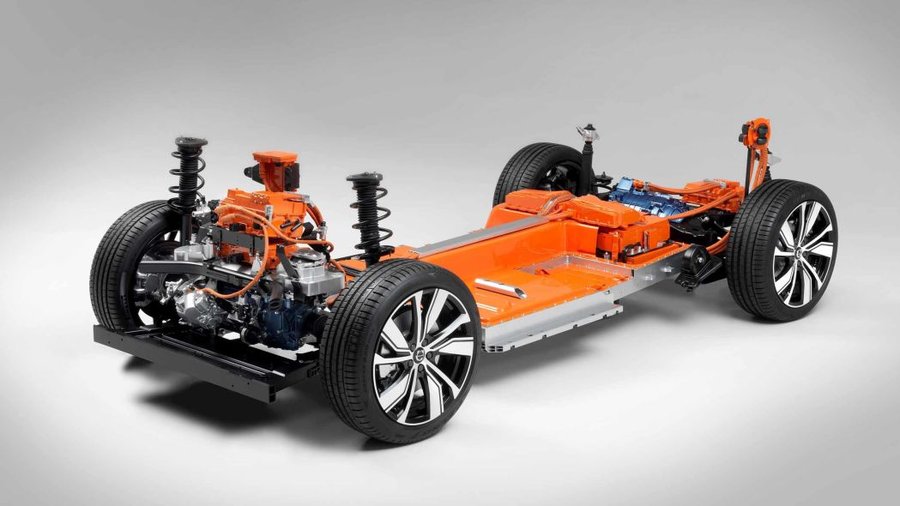Volvo explains how it turned the XC40 into its first EV

We've known for years that Volvo's first electric car would be based on an existing model. The Swedish company just announced it will release its battery-powered XC40 in less than a month, and outlined the effort it put into making the car as safe as the gasoline-powered variant it's based on.
The XC40 rides on a modular platform named CMA that Volvo developed with multiple powertrain types in mind. It's also found under the Polestar 2, among other models. Switching from gasoline to electricity is therefore not as challenging as it sounds, but getting rid of the four-cylinder (or, in some cases, three-cylinder) creates challenges engineers had to overcome. The space between the front wheels and the front bumper is mostly empty, so Volvo reinforced the front structure to compensate for the lack of an engine, and to protect the passenger compartment in a front-end collision.
Integrating a bulky battery pack into the XC40's relatively small footprint also required finding creative solutions. On one hand, it reduces the risk of a rollover by lowering the center of gravity. On the other hand, it needs to be protected from impacts to ensure it doesn't catch fire if punctured. Volvo solved that problem by adding an aluminum crumple zone around the battery pack.
The latest suite of electronic driving aids developed jointly by Volvo and Zenuity will make its debut in the battery-powered XC40. Volvo noted the system includes cameras, radars, and ultrasonic sensors that come together to give the car the ability to see what's around it, and act accordingly. While the crossover won't be autonomous, the platform is modular and scalable, so Volvo will be able to add more features as they become available without needing to fully redesign it.
Volvo's electric XC40 will make its debut on Oct. 16. That's when we'll find out precisely what it's powered by, how much it will cost, and whether it will be available in the United States.
Related News
